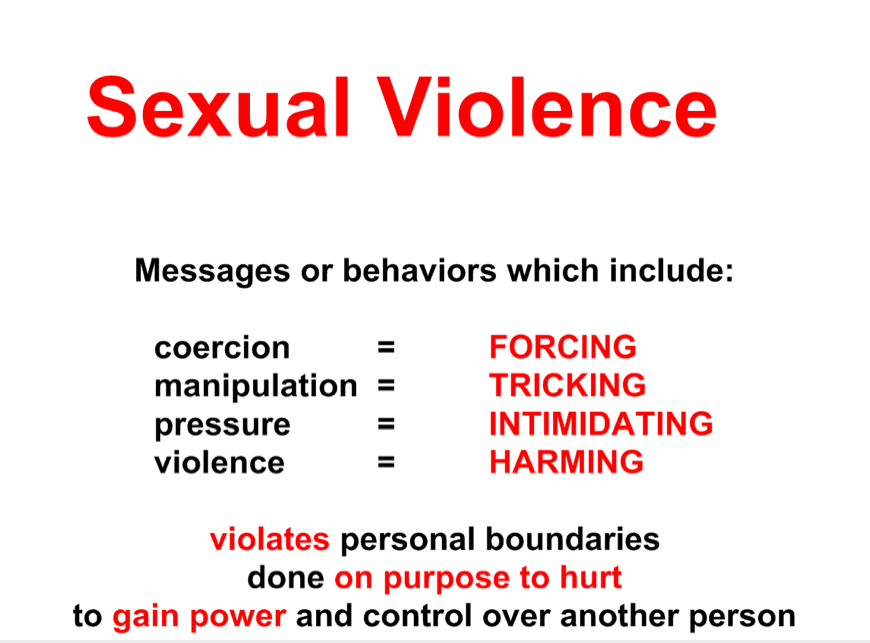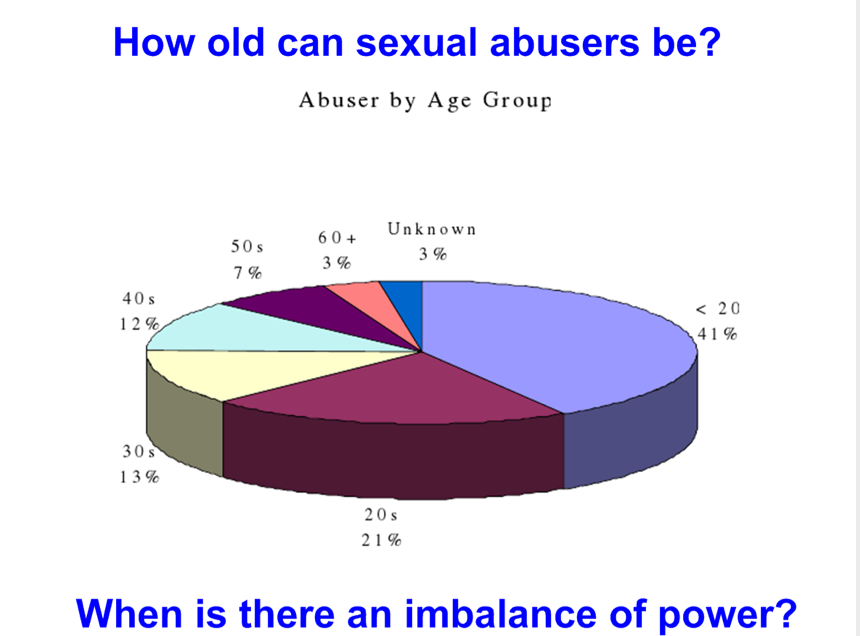 It was the middle of summer, and all I could think was, “I wish I had all my fifth graders together.” This is not usually the kind of thought I have in July, but three things had happened: Jerry Sandusky had been convicted of sexually abusing ten boys, the NCAA had announced sanctions against Penn State, and a local couple had confessed to sexual assault against a 13-year-old. I knew that many of our students would have seen and heard lots about these incidents, from the media and from adult discussion around them. If school had been in session they would have been anxious to talk about it. Local issues always hit close to home – some of them know the couple in question – and Jerry Sandusky had been a major topic of discussion in our class councils about sexual violence prevention in the spring.
It was the middle of summer, and all I could think was, “I wish I had all my fifth graders together.” This is not usually the kind of thought I have in July, but three things had happened: Jerry Sandusky had been convicted of sexually abusing ten boys, the NCAA had announced sanctions against Penn State, and a local couple had confessed to sexual assault against a 13-year-old. I knew that many of our students would have seen and heard lots about these incidents, from the media and from adult discussion around them. If school had been in session they would have been anxious to talk about it. Local issues always hit close to home – some of them know the couple in question – and Jerry Sandusky had been a major topic of discussion in our class councils about sexual violence prevention in the spring.

Most of the kids had heard about Jerry Sandusky and immediately brought up his name and details they had heard about the case when we started discussing sexual abuse.
In the next week or so I will share some of the activities and resources that I use to teach sexual violence prevention. To start with, here’s how I introduced the use of data into lessons about sexual abuse this past year.
I teach sexual abuse prevention annually as part of my personal safety units in grades K-5, but I am constantly on the look for ways to improve student understanding. It’s always a struggle to balance what kids already know as “stranger danger” (which is not a term we use at school, but one they clearly know, and usually get silly about), with the reality that most sexual abuse is perpetrated by people known to the children they abuse. I want kids to understand what to look out for, but don’t want to frighten them into thinking they can’t trust anyone. It’s a fine line.
Another challenge is how to approach a key aspect of sexual violence prevention that is rarely addressed: how to help potential or unidentified perpetrators build skills, change behaviors, and seek help from trusted adults. In our culture we teach our children to take safety precautions like locking doors, but we also readily teach them not to steal – that it hurts others, that it is illegal, and that there are other ways to get their needs met. Yes, we need to teach potential and actual targets of sexual violence how to protect themselves and seek adult help, but just having a key that might lock the door is not enough.
I got some great new ideas about how to address these issues last winter when I attended a district presentation about sexual violence prevention. (Vermont mandates that ALL school staff – from custodians to administrators – be trained in sexual violence prevention. Yet another reason to love Vermont!) Most of the information itself wasn’t new to me, but a couple of the presenter’s slides had me almost jumping out of my seat. Two simple little pie charts and a whole new lesson was born!
I redesigned my fifth grade unit from the very top. The State of Vermont refers to this work as “sexual violence prevention” and so would we. It wasn’t the word “sexual” that was a big change – we already used the term “sexual abuse.” It was the word “violence.” As I sat there in the training, I thought, “Let’s just call it what it is, shall we?” And that’s where we started, with a definition of violence.
1. Define Violence & Sexual Violence
Violence:
1. Physical force exerted for the purpose of violating, damaging, or abusing.
2. Abusive or unjust exercise of power.
The kids immediately related this to what they had already learned about bullying – that it is done on purpose to hurt and involves an imbalance of power. Yay! They had learned, could apply, and make connections!
They made even more connections when they saw the slide that defined sexual violence:

I adapted the definition of “sexual violence” that used the words on the left, providing synonyms that would be more readily understandable to the kids.
2. Draw conclusions from data about sexual abuse
The following slides are from the sexual violence prevention presentation that I attended. I put them up on the SmartBoard and asked the students to look at the data. I showed the first slide, gave them a few moments, then asked them to share what they noticed.
I heard lots of “Whoa!” and “Look at that!” as they realized that only 1% of the abusers convicted in 2009 were strangers. Some of the mathematicians started adding to find out what percentage of the perpetrators actually lived in the same home as the victims, what percentage was comprised of relatives, and what percentage were friends and acquaintances. Again, they referred back to what they knew about bullying, pointing out that bullies are usually known to their targets. The kids have heard every year from me that most abusers are known to the kids they target, but the difficulty of taking in this hard truth combined with our culture’s hyper-focus on “stranger danger” has made it a difficult concept for them to truly grasp. This slide changed everything. A picture really does paint a thousand words!
Then I had them take a look at the second slide.
The kids quickly noticed that 41% of the convicted abusers were under 20, which meant that they were teenagers and kids. One student commented that this made sense because abusive kids and teenagers were more likely to have the opportunity to spend time with potential targets than abusive adults would. I didn’t want kids to make the assumption that developmentally appropriate curiosity and exploration equaled abuse, so I asked them to think again about what they knew about bullying and imbalances of power. They were able to identify that threats, bribes, secrecy, and differences in age, size, and intellectual ability would be clues that a situation was not only unpleasant, but abusive.
This data also allowed me an opening to try to reach anyone who may already have perpetrated or had had thoughts about doing so. I said:
“I have known kids who have abused other kids. They are not bad kids. They are nice people. I really like them. They have friends, they are fun, and they are good learners in their classrooms. But they made a mistake. They did something that hurt other kids, and they needed to get help. Talking about it with an adult that they trust helped them and then they didn’t have to feel so bad about doing something that hurt another kid.”
I was really grateful for this opening, but didn’t expect any result. But darned if a note didn’t appear in my mailbox later that day:
“Dear Mrs. Lallier, I think I need help. When I was 9 I segshually abbused __________ 2 times.”
Wow. Granted, the writer of the note tends to speak (and apparently write) without much of a filter, but even so, the fact that showing the kids this data had had such an impact so immediately blew me away. Of course I had to quickly shake it off and do the necessary follow-up (which went well), but the feeling of being stunned lasted quite a while.

In a subsequent lesson, kids made posters to raise awareness about sexual abuse. The two students who made this poster chose to feature data about sexual abuse.
I will definitely be repeating this lesson. I will keep my eye on data released by the state to make sure that I am staying up to date. I’m sure that you can access similar data for your state, but honestly, if that proves difficult, I don’t think there’s anything wrong with using what I’ve shared with you here.
Coming in the next week or so:
- Teaching kids to watch out for grooming behaviors
- Additional resources to use in your sexual violence prevention lessons
- Resources to help you develop a sexual violence prevention program
What do you do to teach sexual violence prevention in your school?
You might also be interested in:
A Collection of Resources for Sexual Abuse Prevention
Teaching Kids How to Tell About Sexual Abuse
Teaching Kids to Recognize Grooming
“I Got Safe So Quickly”: How Kids Feel After Telling About Sexual Abuse



Hi Rebecca, Do you know where the data (on the graphs) came from? Just wondering if it was Vermont data or US data. I might like to use your idea, but want to use pertinent data.
Susie
Hi Susie,
It’s Vermont data from 2009.
Rebecca
Our personal safety lessons for the older kids (canned lesson) is so dry and doesn’t even address the possibility that students may have abused someone in the past. I am so thankful for your ideas and even the wording you used. It will definitely improve my lessons this year!
This was such an eye opening post for me and really has me thinking about my “too generic” lessons. Could you please share what your personal safety lessons look like across all grade levels – K-5? I’d so appreciate seeing what topics you cover and the language you use in the different grade levels.
I would be glad to share my personal safety lessons K-5. Currently my office is one giant pile in a corner while the carpet is drying, but I’ll work on getting these lessons posted early this fall. This post outlines the beginning of my 5th grade unit.